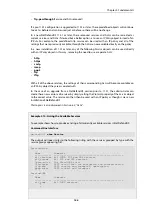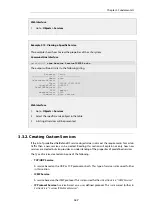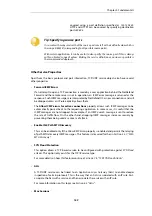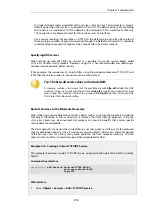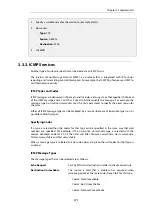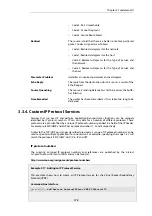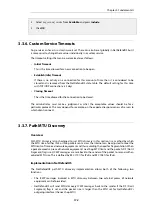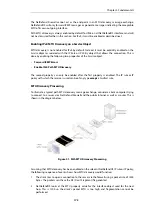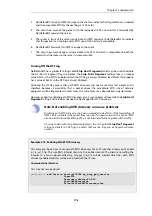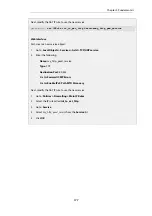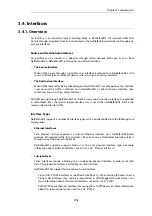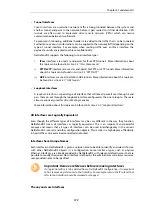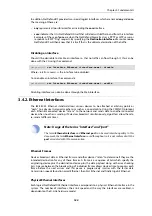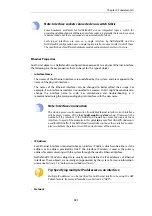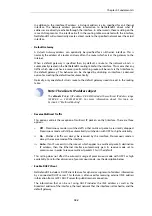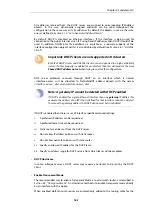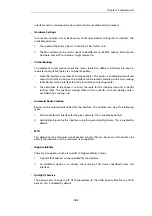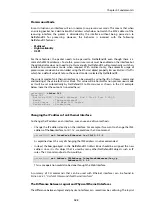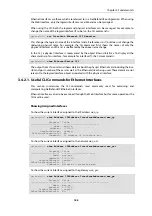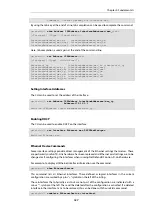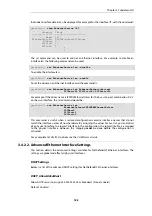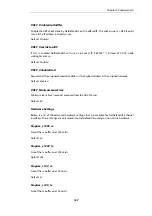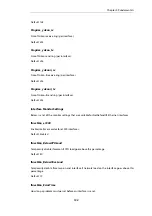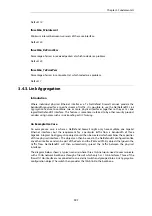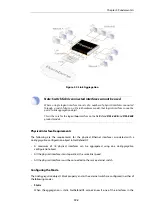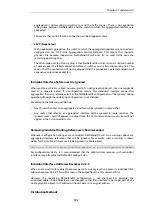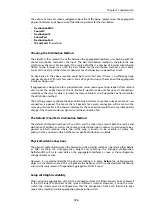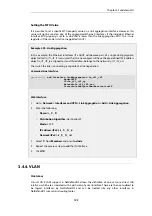
In addition, NetDefendOS provides two special logical interfaces which are named any and core.
The meaning of these are:
•
any represents all possible interfaces including the core interface.
•
core indicates that it is NetDefendOS itself that will deal with traffic to and from this interface.
Examples of the use of core are when the NetDefend Firewall acts as a PPTP or L2TP server or
responds to ICMP "Ping" requests. By specifying the Destination Interface of a route as core,
NetDefendOS will then know that it is itself that is the ultimate destination of the traffic.
Disabling an Interface
Should it be desirable to disable an interface so that no traffic can flow through it, this can be
done with the CLI using the command:
gw-world:/> set Interface Ethernet <interface-name> -disable
Where
<interface-name>
is the interface to be disabled.
To re-enable an interface, the command is:
gw-world:/> set Interface Ethernet <interface-name> -enable
Disabling interfaces can also be done through the Web Interface.
3.4.2. Ethernet Interfaces
The IEEE 802.3 Ethernet standard allows various devices to be attached at arbitrary points or
"ports" to a physical transport mechanism such as a coaxial cable. Using the CSMA/CD protocol,
each Ethernet connected device "listens" to the network and sends data to another connected
device when no other is sending. If 2 devices broadcast simultaneously, algorithms allow them to
re-send at different times.
Note: Usage of the terms "interface" and "port"
The terms
Ethernet interface
and
Ethernet port
can be used interchangeably. In this
document, the term
Ethernet interface
is used throughout so it is not confused with the
port
associated with IP communication.
Ethernet Frames
Devices broadcast data as Ethernet
frames
and other devices "listen" to determine if they are the
intended destination for any of these frames. A frame is a sequence of bits which specify the
originating device plus the destination device plus the data payload along with error checking
bits. A pause between the broadcasting of individual frames allows devices time to process each
frame before the next arrives and this pause is progressively smaller with the faster data
transmission speeds found in normal Ethernet, then Fast Ethernet and finally Gigabit Ethernet.
Physical Ethernet Interfaces
Each logical NetDefendOS Ethernet interface corresponds to a physical Ethernet interface in the
system. The number of interfaces, their link speed and the way the interfaces are realized, is
dependent on the D-Link hardware model.
Chapter 3: Fundamentals
180
Summary of Contents for NetDefendOS
Page 30: ...Figure 1 3 Packet Flow Schematic Part III Chapter 1 NetDefendOS Overview 30 ...
Page 32: ...Chapter 1 NetDefendOS Overview 32 ...
Page 144: ...Chapter 2 Management and Maintenance 144 ...
Page 284: ...Chapter 3 Fundamentals 284 ...
Page 392: ...Chapter 4 Routing 392 ...
Page 419: ... Host 2001 DB8 1 MAC 00 90 12 13 14 15 5 Click OK Chapter 5 DHCP Services 419 ...
Page 420: ...Chapter 5 DHCP Services 420 ...
Page 573: ...Chapter 6 Security Mechanisms 573 ...
Page 607: ...Chapter 7 Address Translation 607 ...
Page 666: ...Chapter 8 User Authentication 666 ...
Page 775: ...Chapter 9 VPN 775 ...
Page 819: ...Chapter 10 Traffic Management 819 ...
Page 842: ...Chapter 11 High Availability 842 ...
Page 866: ...Default Enabled Chapter 13 Advanced Settings 866 ...
Page 879: ...Chapter 13 Advanced Settings 879 ...

